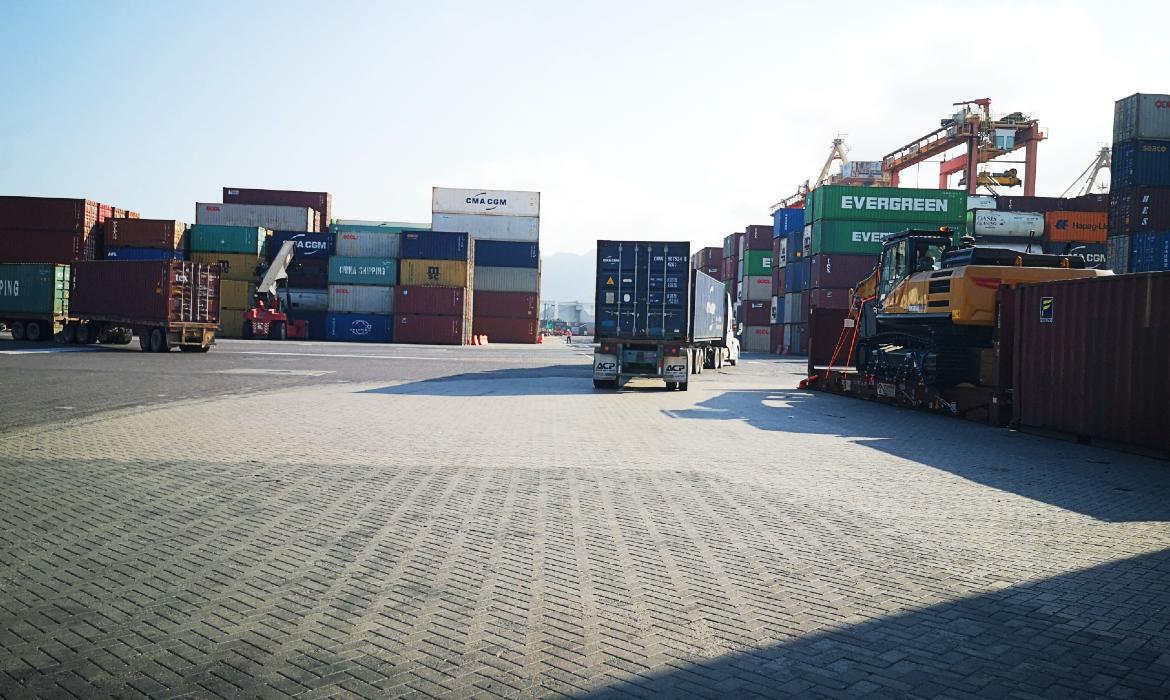
It wasn’t for April or May. The opening of the north access to the port of Manzanillo has been postponed until July of this year, a roadway eagerly anticipated by the port community due to the collapses experienced by this maritime hub in its only land access for road transport in the southern area.
“It will be ready in July, according to the latest information. It is a key point that will completely change the reality of Manzanillo in terms of the challenge we face with access, both for the entry and exit of containers and trucks,” said José Antonio Contreras, CEO of the Association of Terminals and Operators Manzanillo (ASTOM), in an interview with T21.
The postponement of the opening of the north access comes at a time when the port of Manzanillo has seen substantial increases in operations, resulting in a higher demand for trucks for the unloading or reception of containers.
According to port authorities, Manzanillo receives between four thousand and five thousand trucks daily.
In just the first quarter of this year, the Colima port has received a total of 958,271 twenty-foot containers (TEU), an increase of 17.8% compared to the same period a year earlier, according to data from the General Coordination of Ports and Merchant Marine (CGPMM).
This increase has occurred in both operational pathways, meaning that imports at the port have handled 399,704 TEUs (+19.3%), while exports total 393,332 TEUs (+19.2%).
José Antonio Contreras believes that this upward trend is due to the decentralization of production globally, which has led to the industrial trend of nearshoring (relocation of production lines) alongside the arrival of more companies to the country; as well as an increase in domestic consumption, where there is also a greater purchase of vehicles and, consequently, their importation.
In the latter case, although the port of Manzanillo is not known for handling new automobiles, during the first quarter, it registered 1,039 units of imports, 64.4% more than in the same period last year, all of which have disembarked in containers, reflecting a new trend in the maritime world.
The CEO of Contecon Manzanillo also mentioned that the port has been preparing to handle the increase in the volume of containerized goods, both through private investments by each terminal to increase their operational infrastructure, as well as actions taken by port authorities.
In this regard, Contreras highlighted that recently, the customs office in Manzanillo has installed two new inspection units in the northern area. Additionally, he mentioned that in the last semester, ASTOM has been in talks with customs authorities to improve the evacuation of containers.
“In 2020, no one thought we would be at these activity levels, and this has brought challenges both internally at the terminals and externally, affecting the entire logistics chain. The solution is to increase the capacity of access routes to the terminals, which is underway. The other solution is to increase the use of the railway, considering that approximately 90% of the cargo bound for Monterrey from Manzanillo travels by road,” he said.
Upcoming Projects
José Antonio Contreras mentioned that among the projects currently being worked on by ASTOM is the establishment of a port training and education center, in collaboration with the United Nations, aimed at the professionalization and ongoing education of individuals already working or potentially working at the port of Manzanillo.
“It is an extremely ambitious project that is on schedule,” he said.
He also revealed that ASTOM will hold an event next November where the voices of the port community can come together to discuss the needs and proposals that will lead to improvements for the port of Manzanillo.
Comment and follow us on X: : @EnriqueDuRio / @GrupoT21














